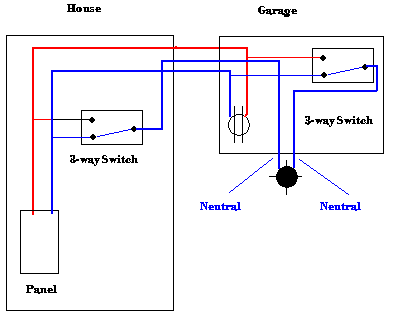blah....blah....blah
blah....blah....blah
The reason a three way is called a 3-way is because, 2 SPDT switches can be connected in a fashion to form either a two way or a three way switch. (both controling one load with two switches)
THE INFORMATION BELOW DESCRIBES A TWO WAY SWITCH
An unrecommended method of controlling a load with two switches:
The unrecommended way using the hot and neutral directly. If there is a hot (a unique phase) and a neutral wire in both switches and just one wire between them where the light is connected, you can then solve the two way switch problem easily: just plug the hot in the top from switch, the neutral in the bottom from switch and the wire that goes to the light in the middle from the switch. This in both switches. Now you have a fully functional two way switch.
There are four possibilities and just in two of them there is a hot and a neutral connected in the poles of the light. In the other ones, both poles are neutral or hot and then no current flows because the potential difference is zero.
The advantage of this method is that it uses just one wire to the light, having a hot and neutral in both switches.
The reason why this is not recommended is that the light socket pins may still be hot even with the light off, which poses a risk when changing a bulb. Another problem with this method is that in both switches there will be hot and neutral wires entering a single switch, which can lead to a short circuit in the event of switch failure, unlike the other methods.
This method is in defiance of the NEC and the CEC. In nearly any and all applications, neutral conductors should never be switched. Not only is this a shock hazard due to mistakenly believing that a hot conductor is switched off; it is also a fire hazard and can destroy sensitive equipment due to excessive and unbalanced current flowing on hot conductors that would outherwise flow back to ground on the neutral conductor.
DON'T MESS WITH A+



